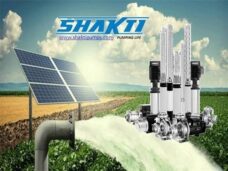Highlights :
- A space solar power prototype launched into orbit in January this year was recently found to be operational.
- It has demonstrated its ability to wirelessly transmit power in space and beam detectable power to Earth for the first time,

The success of solar power on the Earth is already getting traction, leading to faster adoption of clean energy worldwide. However, have you ever wondered about the possibility of getting solar energy from space without any wired connections? Early trials have shown that such systems are feasible.
A space solar power prototype launched into orbit in January this year was recently found to be operational. It has demonstrated its ability to wirelessly transmit power in space and beam detectable power to Earth for the first time, opening a vault of opportunities for the power of solar energy.
Wireless power transfer was demonstrated by MAPLE, one of three key technologies tested by the Space Solar Power Demonstrator (SSPD-1), the first space-borne prototype from Caltech’s Space Solar Power Project (SSPP). SSPP aims to harvest solar power in space and transmit it to the Earth’s surface.
MAPLE (Microwave Array for Power-transfer Low-orbit Experiment) is one of the three critical experiments within SSPD-1. It consists of various flexible, lightweight microwave power transmitters driven by custom electronic chips built using low-cost silicon technologies. It uses an array of transmitters to beam the energy to desired locations.
For SSPP to be feasible, energy transmission arrays must be lightweight to minimize the amount of fuel needed to send them to space, flexible so they can fold up into a package that can be transported in a rocket, and a low-cost technology overall.
MAPLE was developed by a Caltech team led by Ali Hajimiri, Bren Professor of Electrical Engineering and Medical Engineering and co-director of SSPP.
“Through the experiments, we have run so far, we received confirmation that MAPLE can transmit power successfully to receivers in space,” Hajimiri says. “We have also been able to program the array to direct its energy toward Earth, which we detected here at Caltech. We had, of course, tested it on Earth, but now we know it can survive the trip to space and operate there.”
Using constructive and destructive interference between individual transmitters, a bank of power transmitters can shift the focus and direction of the energy it beams out—without any moving parts. The transmitter array uses precise timing-control elements to dynamically focus the power selectively on the desired location using the coherent addition of electromagnetic waves. It enables most of the energy to be transmitted to the desired location and nowhere else.
MAPLE features two separate receiver arrays located about a foot away from the transmitter to receive the energy, convert it to direct current (DC) electricity, and use it to light up a pair of LEDs to demonstrate the full sequence of wireless energy transmission at a distance in space. MAPLE tested this in space by lighting up each LED individually and shifting back and forth between them. The experiment is not sealed, so it is subject to the harsh environment of space, including the wide temperature swings and solar radiation that will be faced one day by large-scale SSPP units.
“To our knowledge, no one has ever demonstrated wireless energy transfer in space, even with expensive rigid structures. We are doing it with flexible, lightweight structures and integrated circuits. This is a first,” says Hajimiri.
MAPLE also includes a small window through which the array can beam the energy. This transmitted energy was detected by a receiver on the roof of the Gordon and Betty Moore Laboratory of Engineering on Caltech’s campus in Pasadena. The received signal appeared at the expected time and frequency and had the right frequency shift as predicted based on its travel from orbit.





























